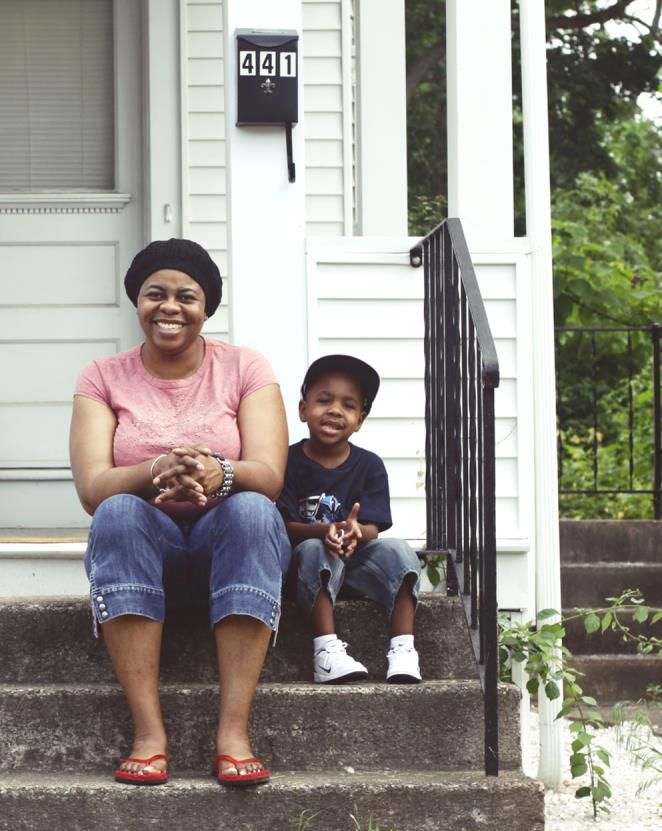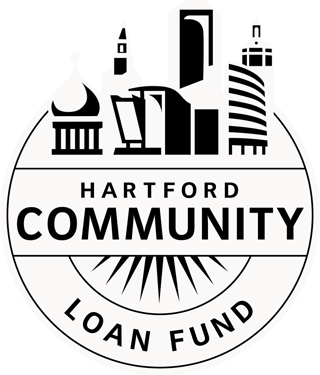
In the spring of 2012, a two-story colonial house in East Hartford got a very excited new owner. Former Northend renter Jennifer Mathis bought the hundred-year-old historic home with help from a credit-building loan offered by the Hartford Community Loan Fund (HCLF). The three-bedroom house, with its spacious back yard and front porch, is a dream come true for Mathis. "This house means everything to me. Now I have something I can give my kids. I've been trying forever [to get a mortgage], but I was always turned down, even for small loans. And every time I applied for mortgages my credit wasn't where it was supposed to be, or I wasn't making enough money to qualify to have a home. So this . . . is the biggest accomplishment of my life."
In 2010 Mathis signed up to participate in an Individual Development Account (IDA) program run by a Hartford-based nonprofit. Through the IDA, personal savings are matched by state or federal funds toward specific goals such as buying a house, paying for education, or starting a business. To help repair her credit, financial counselors at the organization connected Mathis to the Hartford Community Loan Fund to apply for an IDA-Secured Credit Builder Loan.
A new financial solution offering introduced by HCLF in 2011, the Credit Builder Loan represents a unique product in a financial landscape which generally offers few credit-building options for consumers with low credit scores. Through the Credit Builder Loan, Mathis borrowed just over $300 from HCLF to pay off a dental bill. Over the next year her record of on-time monthly payments on the loan contributed to an increase of more than 50 points in her credit score, paving the way for approval of an affordable mortgage loan.
Of the sample data collected for HCLF by the Woodstock Institute, more than 50% of residents in Hartford's primarily African-American/West Indian neighborhoods (zip codes 06120 and 06112) had credit scores below 620
Mathis's previous credit struggles are unfortunately the norm for most adult residents of Hartford's northend and other communities of color. Recent analysis of credit score data by HCLF revealed significant disparities in credit scores among Hartford area zip codes. Of the sample data collected for HCLF by the Woodstock Institute, more than 50% of residents in Hartford's primarily African-American/West Indian neighborhoods (zip codes 06120 and 06112) had credit scores below 620, a common boundary determining access to affordable credit and products like traditional mortgage loans. In Hartford's largely Hispanic southend neighborhoods, approximately 40% of residents had credit scores below 620. By contrast, in most of Hartford's predominantly white and more affluent suburbs, less than 10% of adult residents had credit scores below 620.
Sitting in her family's new living room, Mathis reflected on her own experience. "I first figured out that credit was important in the process of buying a house. I kept thinking, why is it so hard to get a house? At the time I thought [I might qualify for a mortgage] if they see I'm faithfully paying my rent with no late fees, that I was never, ever evicted, had no bounced checks or anything...but they don't consider rental payments in your credit score."
"I wish they taught this stuff in school," said Mathis. "When I first graduated from high school, I was young and they just send you the credit card applications. And the next thing you know you've got these credit cards and you could just go shopping and just say 'charge it', not realizing you have to pay for this bill. So it starts from there. But we live and we learn. And I've learned. And I can pass that on to my kids."
Along with financial coaching offered through the IDA program, homebuyer counseling helped Mathis fill in the gaps in her financial management education. In addition to walking her through the steps of choosing a realtor, an attorney, and buying insurance, the homebuyer program helped her understand how credit history gets reported and what actions she could take to improve her personal credit score. "The thing with the IDA program," says Mathis, "is some people think that they're supposed to do the work for you. That's not what it's all about. You have to do the work yourself. They just provide the information to get you educated and support your savings. And that's where HCLF comes in to help those who have low credit or no credit - to help increase their credit to where it needs to be. The people at the Loan Fund were very, very helpful. They did a lot of follow up. They're working with you, not working against you. I wish more people knew about this program."
When Mathis finally moved into her new home, the box springs to her daughter's bed wouldn't fit over the top railing of the stairs. Her brother decided to remove the stair railing temporarily. "And that's when I realized - I can knock a wall down if I want to!" laughed Mathis. "I could paint the walls green if I want to! I can do whatever I want, because it's mine!"
"It's a good feeling," she continued, "I'm still in shock. When I first got the keys I just cried. I cried on the way to the attorney's office. I cried coming out of the attorney's office. I cried when I walked in the house. I'm about to cry now. I finally did it."
SHARE



